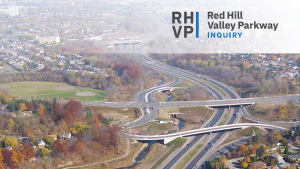An American transportation consultant with strong opinions on the correct way to build highways recently shed some light on design and construction technical innovations underway in the United States.
“How can we break this ‘cheaper is better’ mentality? If you want to make it cheap, you get what you pay for,” Doug Gransberg said to the approximately 350 attendees at the Ontario Asphalt Pavement Council’s (OAPC) recent seminar.
Building highways is often a balancing act and a “bottom-line” endeavour with pavement contracts traditionally awarded to the lowest bidder because of the budget restrictions transportation agencies face, said Gransberg, president of Gransberg & Associates, Inc., a consulting firm which provides project management, construction engineering, cost analysis, and asset management services to public and private clients throughout world.
For their part, contractors submit bids with the minimal acceptable levels of quality because that’s called for in the specifications.
But there are other alternatives and one of those is to include contractors in the very early stages of the design process, said Gransberg.
Transportation agencies and consultants know how to design pavements, but “contractors have the best estimators in the industry, the deepest knowledge of the local market, and the most experience dealing with local environmental, climatological, and transit user patterns. I am not talking about design-build here — though it does fill the bill.”
Instead, he asked the audience to consider the possibilities of alternative technical concepts (ATC) on design-bid-build projects.
Missouri was the leader in this initiative which has since been used by other states including Alabama and Michigan.
Under this model, which was implemented by that state in 2004, transportation agencies place 60 per cent of a project’s plans in the public plans room, 12 months before tendering—known as “letting”. Then, 120 days before the letting, an outreach meeting is conducted with interested contractors.
“We can’t take away of the competitive edge,” said Gransberg, explaining, that 60 to 120 days before the letting, confidential one-on-one meetings are held with interested contractors.
At those meetings contractors can put forward their technical improvement recommendations. Later those recommendations are evaluated and, if approved, the contractor can choose to bid on the approved ATC or bid the baseline design.
Missouri uses both “limited and unlimited” ATC’s and since its inception has opened up the process to allow contractor proposals on alternative pipes and culverts and grading/staging operations.
Unlimited ATC have been used on 10 projects including the new Mississippi Bridge where a redesigned foundation saved the state $7.5 million.
In yet another example of contractor input, the speaker cited the building of the new Sellwood Bridge in Portland Oregon. Erected in 2016, it replaced a 1925 steel truss structure.
The new bridge is the same location as the earlier one and the traditional method of diverting traffic to one lane and then commencing with the standard sequenced demolition/construction was the model originally considered.
Instead, the local county accepted a proposal by the contractor to jack the old structure approximately 24 metres away from its original spot and then build new entrance and exit ramps which allowed motorists to continue using both lanes, while construction of the new bridge proceeded unhindered, he said.
Touching on the experience of other states, Gransberg said that in Michigan, a limited form of alternative design considerations is used to allow contractors to propose traffic plan improvements.
Although it isn’t a form of ATC, he drew the audience’s attention to a unit price map which his firm created for the State of Montana. It highlights that state’s construction cost data in a visual manner which, in turn, allows its transportation department to determine if alternative designs are economically worth pursuing.
In the northwest part of the state there are no hot mix asphalt plants and it might make more economic sense to use concrete for road construction in that area, said Gransberg, noting that, while Montana is large geographically, it has a population of just over one million.
Several other technical suggestions were put forward including Gransberg’s own idea of green bidding which would reward contractors who purchase and use fuel-efficient equipment. So far, the proposal has not gained traction with transportation agencies.
“It (the proposal) has been published in a journal, but so far that’s it,” he said in an interview afterwards.
In his concluding comments he cited a University of Calgary study which calls for the upfront involvement of contractors in road projects.
One of its clauses states that: “Public road projects should be developed in a method that is ‘construction-centric rather than the current ‘design-centric’ mode.”





Recent Comments
comments for this post are closed